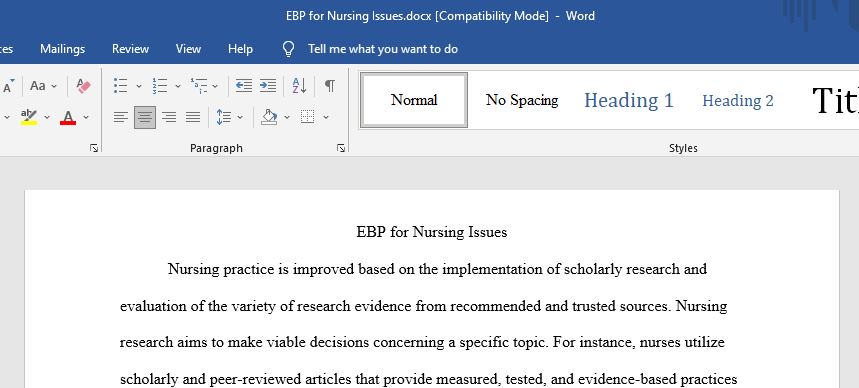EBP for Nursing Issues
Overcrowding is a major problem in the emergency department. Notably, overcrowding in emergency department (ED) has adverse effects of the quality of care provided to patients. Importantly, overcrowding often result in delays in provision of care to patients and this led to increased negative patient outcomes. Additionally, overcrowding in EDs is mostly caused by various factors. Firstly, we have staff related issues (Rasouli et al., 2019). The number of care providers in emergency departments are inadequate compared to the number of patients admitted to the EDs and as such patients do not receive quality and timely care.
Importantly, there is dire need for improvement in EDs to curb the problem of overcrowding. One of the reasons improvement is required is because patients’ lives are at stake. Due to overcrowding, delays in care provision is predominant in EDs and this has led to negative patient outcomes and increased mortality rates (Rasouli et al., 2019). Additionally, overcrowding results in increased workload for emergency caregivers. Notably, augmented workload puts much pressure on caregivers and as such they are likely to provide low quality care to patients. Stress among caregivers in EDs is a major cause of poor quality care as the number of medical errors continuously increase hence negative patient outcomes.
The theory of nursing as caring is the most suitable theory that applies to the problem of overcrowding in EDs. The theory aims at ensuring that all the necessary factors that help in delivering quality care to patients are availed (Acob, 2018). It is vital to acknowledge that overcrowding hinders caregivers from providing quality care to their patients as the number of patients are overwhelming. The theory of nursing as caring would ensure that patients are treated in conducive environment and that nurses have adequate time with their patients. Adequate nurse-patient time ensures that they develop interpersonal relationships that are vital for faster recovery.
References
Acob, J. R. U. (2018). Caring as Unending Expression of Nursing (CUEN): A theory of nursing. The Malaysian Journal of Nursing (MJN), 10(2), 52-57.
Rasouli, H. R., Aliakbar Esfahani, A., & Abbasi Farajzadeh, M. (2019). Challenges, consequences, and lessons for way-outs to emergencies at hospitals: a systematic review study. BMC emergency medicine, 19(1), 62. https://doi.org/10.1186/s12873-019-0275-9
Review the evidence-based practice project ideas you described in Topic 5 DQ 1. Based on your initial ideas, what types of scholarly nursing research (such as quantitative or qualitative research, peer-reviewed resources, etc.) would be required to further investigate the issue? Identify the criteria you would use to evaluate the appropriateness of the research. Why is it important to select research that meets these criteria?
Requirements: 250-350 words in APA format
Answer preview:

word limit:356
